The main differences between an air conditioner and a split system

The purpose of the air conditioner is to quickly and efficiently cool the superheated air in a room or room. The list of functions that each cooling unit is endowed with has grown by several points compared to simple window air conditioners 20 years ago. Today's climate control technology is mainly split air conditioners.
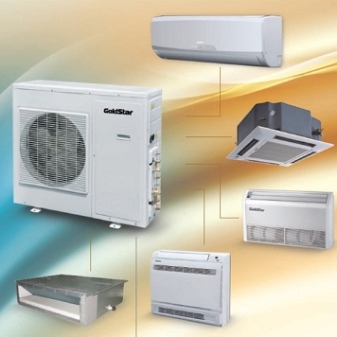
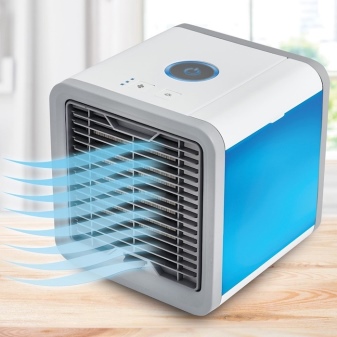
Difference in design
In the subconscious of many, when the term "air conditioner" is mentioned, the image of an ordinary window or above-door monoblock pops up, in which the evaporator and refrigerant compressor are combined in one case, but this is not entirely true. Any cooling device is considered an air conditioner today. - stationary (window, door), portable (portable) monoblock or split air conditioner, which has become the most popular over the past 15 years.
In production workshops, distribution centers, supermarkets, a column installation is used - the most powerful unit in terms of cooling capacity. Channel (multi) systems, "multi-splits" are used in office buildings. All these devices are air conditioners. This concept is collective.
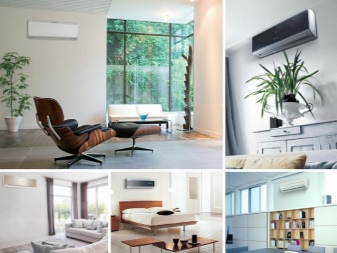
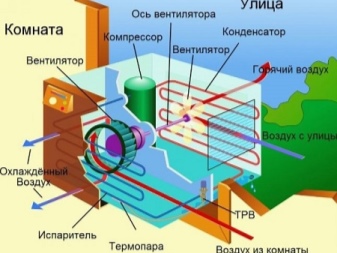
Features of the split system
A split system is an air conditioner, the external and internal blocks of which are spaced on opposite sides of one of the load-bearing walls of a private building or building. The external unit includes:
- compressor with overheating sensor;
- external circuit with a radiator and a cooling fan;
- valves and nozzles where copper pipelines of the freon line are connected.
The system is powered by a 220 Volt mains voltage - one of the supply cables is connected to it through the terminal box.
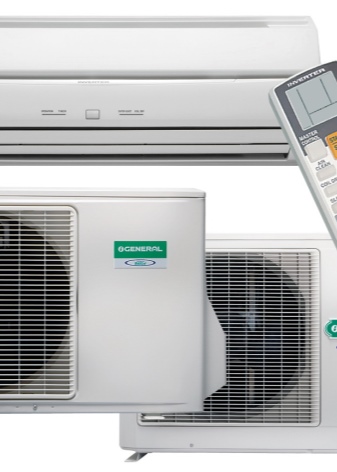
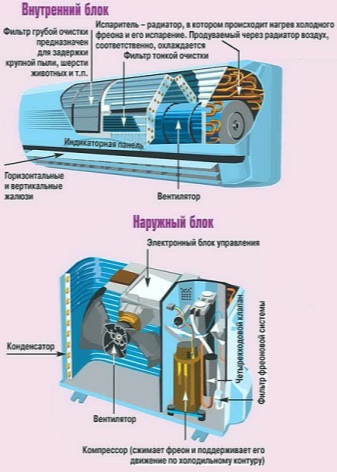
The indoor unit contains:
- freon evaporator with a radiator (internal circuit);
- a fan with a cylindrical-blade impeller, blowing cold from the evaporator into the room;
- coarse filters;
- ECU (electronic control unit);
- a power supply that converts alternating 220 volts to constant 12;
- rotary shutters powered by a separate (stepper) motor powered by a pulse driver board;
- IR receiver of the control panel signal;
- indication unit (LEDs, "buzzer" and display).


Monoblock features
In a monoblock, the components of the indoor and outdoor modules are combined in one housing. Closer to the street, behind, there are:
- compressor with an emergency temperature sensor ("overheating");
- outer contour;
- a fan that “blows off” the heat outside in the supply and exhaust duct that does not communicate with the air in the room.
Closer to the premises, from the front:
- evaporator (inner circuit);
- a second fan blowing cold into the cooled room;
- electronic control board with a power supply for it;
- supply and exhaust ducts that do not communicate with the air outside the building;
- air filter - coarse mesh;
- room temperature sensor.
Both monoblock and split air conditioners work today as both a cooler and a fan heater.
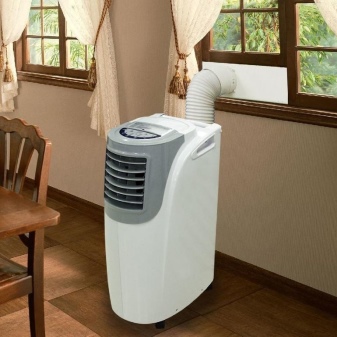
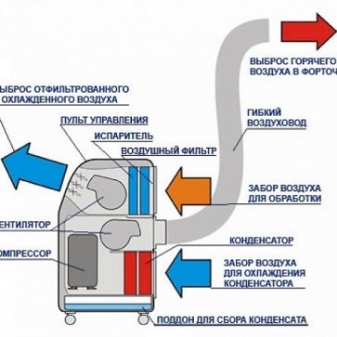
What else is the difference between a monoblock and a split system?
Differences between monoblock and split-system, in addition to the absence of spacing of the external and internal modules, the following.
- Long pipelines are not needed, as are present in a split system.The inner coil is connected to the outer one through control valves located inside the casing.
- Instead of electronic control from the remote control, there can be a simple switch for operating modes and / or a thermostat.
- The form factor is a simple steel box. It is about the size of a microwave. The indoor unit of the split system has an elongated, compact and streamlined shape.
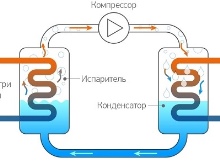


Household split air conditioner
Split-design is the most efficient and low-noise climate system today. The noisiest block - the outdoor one - contains a compressor that compresses the refrigerant to a pressure of 20 atmospheres, and the main fan, which immediately removes heat from the compressed freon.
If the fan does not blow out the heat from the heated freon in time, it will overheat in a few minutes or half an hour or an hour to a temperature above the critical, and the coil will pierce in the weakest point (the cleavage joint or at one of the bends). For this purpose, the external fan is made with large impeller blades, rotates at decent speeds and produces noise up to 30-40 decibels. The compressor, compressing freon, adds its own noise - and raises its overall level up to 60 dB.
The heat is dissipated well, but the system is too noisy, for this purpose it is taken out of the building.
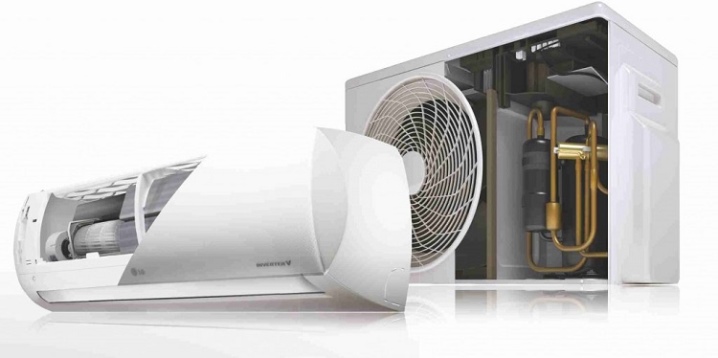
The indoor unit of the split air conditioner contains a freon evaporator, which is highly cooled when the refrigerant liquefied by the compressor of the outdoor unit converts into a gaseous form. This cold is picked up by the air flow created by the propeller of the internal fan and blown into the room, due to which the temperature in the room is 10 degrees or more lower than outside. At +35 in the summer heat outside the window, you will get +21 in the room in half an hour. A thermometer inserted into the slightly opened curtains (blinds) of the indoor unit will show + 5 ... +12, depending on the load level of the entire split system.
Liquefied (in a smaller diameter of the tubes) and gaseous (in a larger) freon circulates through pipelines, or "route". These pipes connect the coils (circuits) of the outdoor and indoor units of the split air conditioner.

A type of split system used in private houses and all-season summer cottages is a floor-ceiling structure. The outdoor unit is no different from the wall-mounted split system, and the indoor unit is located either in the ceiling close to the wall, or a few tens of centimeters from the floor.
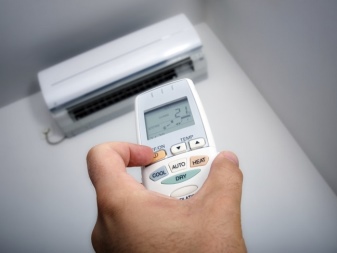
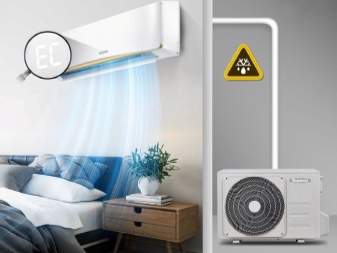
Temperature readings of the units are read every second by temperature sensors located on the coils, the compressor and outside on the indoor unit of the air conditioner. They are transferred to the electronic control module, which controls the operation of all other units and blocks of the device.
The split solution is distinguished by the highest energy efficiency and efficiency. That is why it will not lose its relevance for many years to come.

Industrial split systems
The duct air conditioner uses supply and exhaust ventilation ducts that do not have an exit outside the building. One or more indoor units can be located on different floors or in different clusters of a one-story building. The outdoor unit (one or more) extends outside the building. The advantage of this design is the simultaneous cooling of all rooms on one floor or even the entire building. The disadvantage is the complexity of the design, the enormous laboriousness in its installation, maintenance or replacement of some or all parts and components with new ones.
The column air conditioner is an indoor unit about the size of a household refrigerator. He is outdoor. The outdoor split-block is placed outside the building and installed close to the ground or suspended almost under the building's roof. The advantage of this design is the enormous refrigeration capacity compared to most household systems.

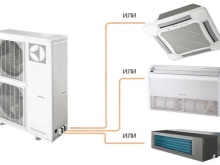
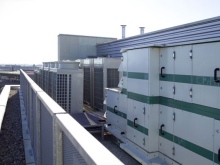
Column air conditioner is a frequent occurrence in sales areas of hypermarkets with an area of up to several thousand square meters. If you turn it on at full power, then within a radius of several meters around it, it will create an autumn-winter cold according to your feelings. Disadvantages of the design - large dimensions and power consumption.
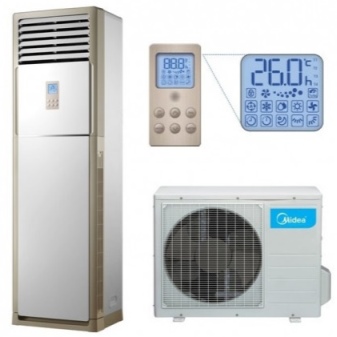
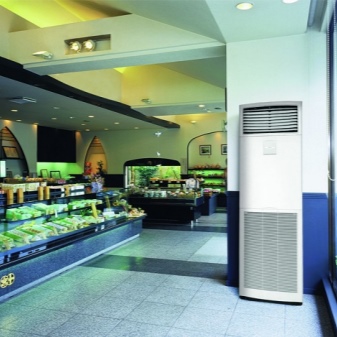
The multi-split system is a replacement for the previous two varieties. One outdoor unit works for several indoor units, divorced in different rooms. Advantage - the original look of the building is not spoiled by a scattering of separate split-blocks near almost every window. The disadvantage is the length of the system, limited by the length of the "track" of 30 m between the outdoor and one of the indoor units. When it is exceeded, such an air conditioner is already ineffective, whatever the thermal insulation of the "tracing" pipes.
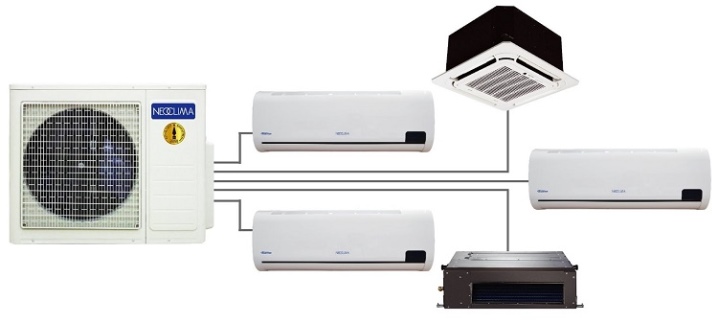
Monoblocks
The window block contains all the parts and assemblies of the system. Advantages - the ability to protect with a lattice on the window or above the door, the "completeness" of the device (structural and functional blocks are not spaced, "2 in 1"). Disadvantages: much less energy efficiency compared to a split system, high noise level. For this reason, window units have evolved from a top offer to a niche one.
Mobile air conditioners are portable units that only need one thing: a hole in the wall for an air duct that discharges superheated air into the street. The advantages are the same as those of the window air conditioner.
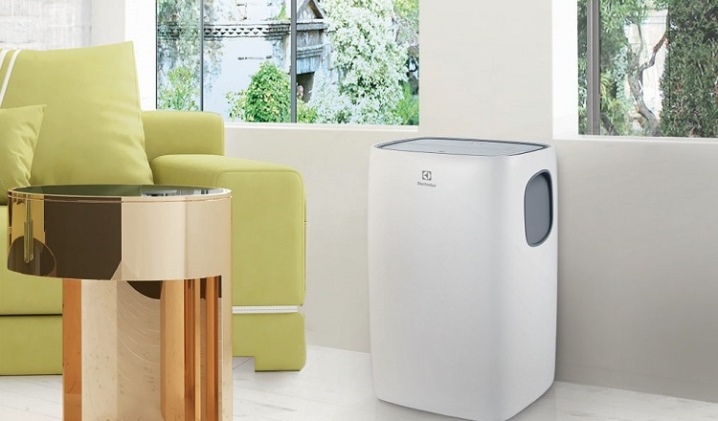
Disadvantages of mobile air conditioners:
- in each of the rooms where the device is used, a hole is drilled for the air duct, which, when not in use, is closed with a plug;
- the need for a tank into which condensate water will be drained;
- even worse refrigeration performance than window air conditioners;
- the device is not designed for rooms with an area of more than 20 m2.
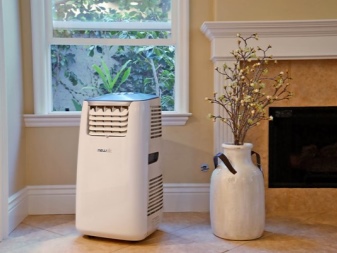
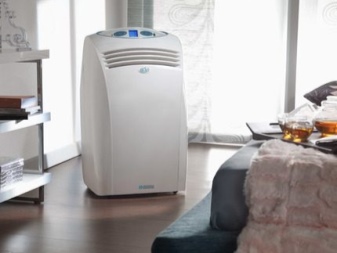
Is the operating principle different?
The operation of all freon-type cooling devices is based on heat absorption (cold release) during the transition of freon from a liquid to a gaseous state. And vice versa, the taken heat freon immediately gives up, it is worth liquefying it again.
When asked whether the principle of operation of a monoblock differs from that of a split system, the answer is unequivocal - no. All air conditioners and refrigerators work on the basis of freezing during the evaporation of freon and heating during its liquefaction during the compression process.
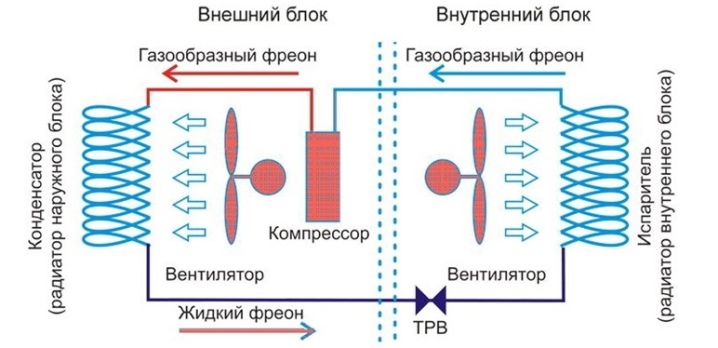
Comparison of other parameters
Before choosing the right air conditioner, pay attention to the key parameters: functionality, cooling capacity, background noise. Before buying, not the last place is occupied by the question of the price of the product.
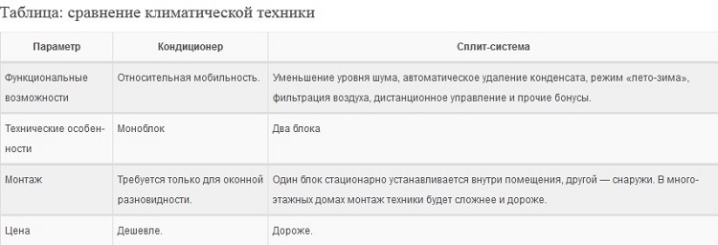
Power
The power consumption is about 20-30% more than the cold one.
- For home (wall) split systems, the electrical power taken up is from 3 to 9 kilowatts. This is enough to effectively (from +30 outdoors to +20 indoors) cool the air in a house or apartment with an area of 100 m2.
- The mobile air conditioner has a power range of 1-3.8 kW. By the power consumption, one can already estimate that it will only "pull" a room up to 20 m2 - taking into account the heat losses coming from overheated air ducts through which hot air is discharged to the street.
- Window air conditioners consume 1.5-3.5 kW. Over the past 20 years, this indicator has remained practically unchanged.
- Column air conditioners take 7.5-50 kW from the network every hour. They need a powerful transmission line that goes into the building. Channel and multi-split systems take about the same amount of electricity.
- For floor-ceiling models, the power varies between 4-15 kW. They will cool the kitchen-living room of 40-50 m2 by 6-10 degrees in 5-20 minutes.
People are different: someone will only need a slight decrease in temperature in the summer from +30 to +25, while someone likes to sit all day at +20. Everyone will choose for himself the power that will be enough for him for complete comfort in the whole house or apartment.

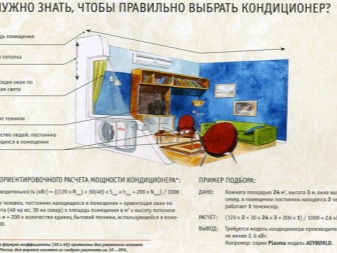
Noise level
All modern systems using an external unit are distinguished by a low noise level.It varies within 20-30 dB for home wall split systems, floor-to-ceiling, duct and column air conditioners - the outdoor unit is located not inside a room, floor, building or private housing construction, but outside them.
Window and mobile systems produce 45-65 dB, which is comparable to city noise. Such background noise seriously affects the nerves of people engaged in responsible work or during their night's sleep. The compressor and main fan generate the lion's share of the noise.
Therefore, all types of air conditioners in which a compressor with a fan are located in the same block or are located inside, and not outside, are not very common in the climate technology market.
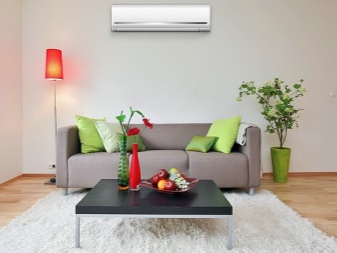
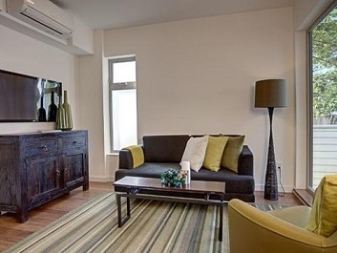
Requirements for operating conditions and functionality
Almost any air conditioner is designed to operate at temperatures from 0 to +58 degrees. In more expensive models, there is additional heating of freon - in northern winter conditions, when it is -50 outside the window, freon is not made gaseous for the normal operation of the device, but you still need to turn on the air conditioner in heating mode. Many air conditioners also work as fan heaters. A special valve is responsible for this function, which changes the direction of movement of freon when switching from "cold" to "warm" and vice versa.
Additional features include:
- ozonation (in rare models);
- air ionization.
All air conditioners remove dust from the air - thanks to filters that retain dust particles. Clean filters twice a month.

Price
Prices for split systems range from 8,000 rubles for 20 m2 of living space and up to 80,000 rubles for 70 m2. Floor-standing air conditioners vary in price from 14 to 40 thousand rubles. They are mainly used for one room or one of the office spaces. Window air conditioners have a range of prices, hardly distinguishable from split systems - 15-45 thousand rubles. Despite the outdated type of performance (both units in one frame), manufacturers are trying to reduce its weight and size, gradually increasing the efficiency of such a monoblock. Nevertheless, there are still powerful and rather heavy models weighing up to 30 kg and requiring the help of at least two more assistants when installing it in the wall opening.
The cost of duct air conditioners varies from 45 to 220 thousand rubles. The pricing policy for this type is due to the complexity of installation and the cost of a large number of components, since supplying outdoor and indoor units is half the battle. Among column-type devices, the price range is the most impressive. It starts from 110 thousand rubles for a 7-kilowatt to 600 thousand - for a capacity of 20 or more kilowatts.
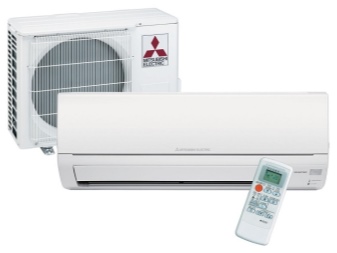
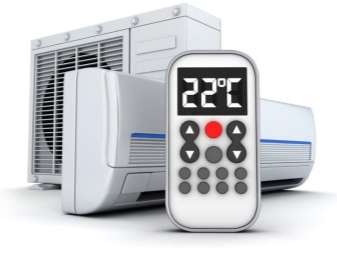
What is the best choice?
A relatively low-power split system - up to several kilowatts of cold power - is suitable for an apartment or a private house. Column and duct split air conditioners, the refrigeration capacity and energy consumption of which is measured in tens of kilowatts, is the lot of production workshops, hangars, warehouses, trading halls, office multi-storey buildings, refrigeration rooms and basement-cellars.
Newbies or people of modest means often start with Chinese air conditioners. (for example, from Supra) for 8-13 thousand rubles. But you shouldn't buy a super-cheap air conditioner. So, the plastic of the case of the indoor unit can give out poisonous fumes.
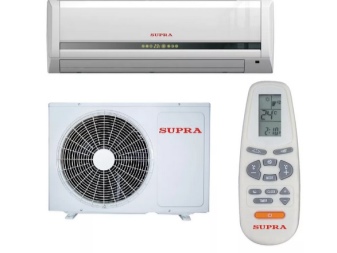
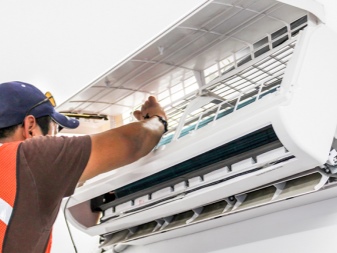
Savings on "track" and coils - when copper is replaced by brass, tube thinness with a thickness of less than 1 mm - leads to breakdown of pipelines after 2-5 months of active operation of the product. Expensive repairs comparable to the cost of another air conditioner of the same kind are guaranteed to you.
If price is more important to you than versatility, choose a budget model for 12-20 thousand rubles from a more famous company, for example, Hyundai, LG, Samsung, Fujitsu: these companies work more conscientiously.
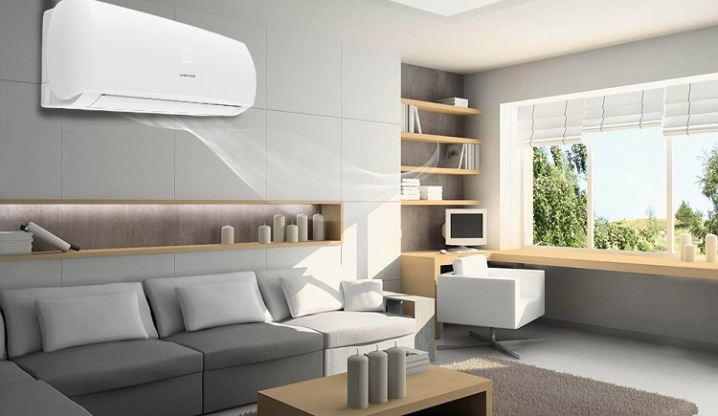
How to further increase the efficiency of the air conditioner?
If we go even further, then for more efficient operation of any air conditioner, use:
- metal-plastic windows and doors with a box-air structure with layers of bulk insulation and rubber seals;
- partially or completely built from foam blocks (or gas blocks) walls of the building;
- thermal insulation in the ceiling - attic-ceiling "pie" with layers of mineral wool and waterproofing, insulated and reliable roof (or floors);
- thermal insulation in the floor of the first floor - "warm floors" with cells filled with expanded clay concrete and mineral wool (along the perimeter of the building).
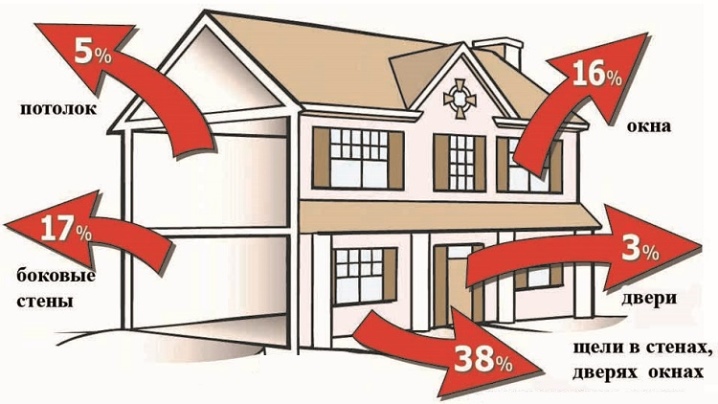
This set of measures taken by the builders allows you to quickly create and supplement the ideal microclimate - coolness, light cold even in tropical heat. This will significantly reduce the load on any air conditioner, eliminating unnecessary and useless work.
It is important not only to choose the right air conditioner according to the square of the room or building, but also to exclude all cold leaks in summer (and heat in winter) outside by installing it in a well-designed building or building. This approach will extend the life of the device, and for you, as the owner of the territory, will significantly reduce the cost of electricity and maintenance of the product itself.
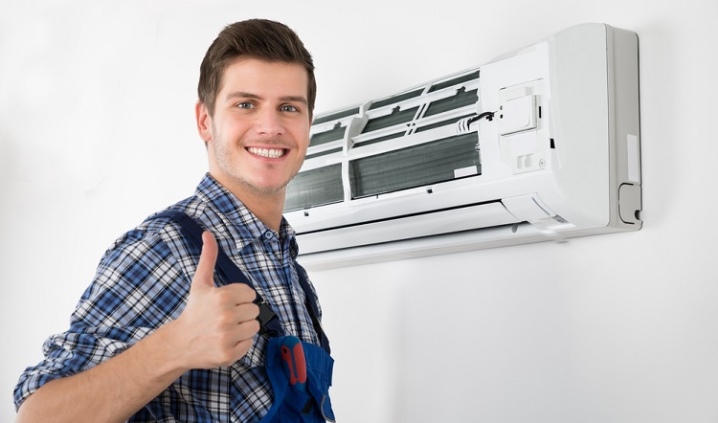
In the next video, you will find the differences between a split system and a floor-standing air conditioner.













The comment was sent successfully.